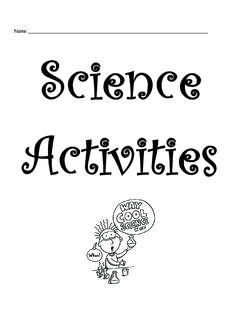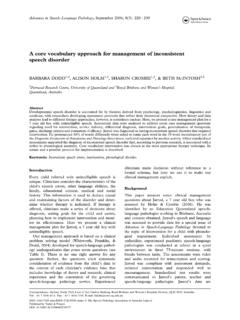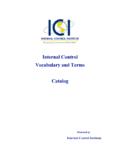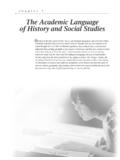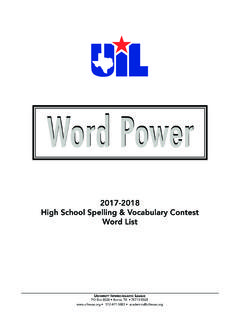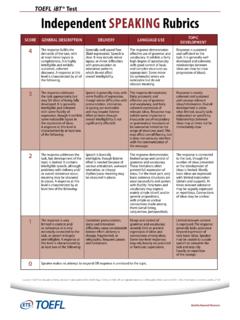Transcription of Teaching Vocabulary - Pearson ELT USA
1 Teaching Vocabulary By Norbert Schmitt University of Nottingham Norbert Schmitt is Professor of Applied Linguistics at the University of Nottingham. He is interested in all aspects of second language Vocabulary acquisition and use. He has published several books on this topic, and is currently writing a Vocabulary research manual. There is no right or best way to teach Vocabulary . The An example of this is a textbook focusing on academic best practice in any situation will depend on the type of Vocabulary , Focus on Vocabulary : Mastering the Academic student being taught, the words targeted, the school system Word List (Schmitt and Schmitt, 2005), in which my wife and curriculum, and many other factors. A number of and I used an academic frequency list to decide on which principles, however, should be considered when developing academic words to include.
2 A Vocabulary component to a language course, some of which I'll outline here. 2. The importance of learning the spelling and pronunciation of a word 1. How many words . and which words to teach The first step in Vocabulary acquisition is to establish an Research shows that learners need to know approximately initial form-meaning link, which is what the vast majority 98 percent of the words in written or spoken discourse in of Vocabulary materials and activities attempt to do. A. order to understand it well (Nation, 2006). Reaching this common assumption, however, seems to be that learning percentage of coverage in written texts takes about 8,000 the meaning is key, while the form element is either 9,000 word families. The spoken mode requires slightly downplayed or disregarded. In fact, research shows that fewer word families, about 5,000 7,000.
3 A word family second-language (L2) learners often have trouble with consists of the root (stimulate), its inflections (stimulates, word forms (Koda, 1997; Laufer, 1988). Words with similar stimulated, stimulating), and its derivatives (stimulation, forms, for example, are particularly confusing for students, stimulative). Thus, each word family will have several especially words that are alike except for the suffixes members. For example, 6,000 word families equals about (comprehensive/comprehensible) or the vowels (adopt/. 28,000 individual words, and 8,000 families equals about adapt). This problem is particularly acute if there are many words. Of course, learners can cope with smaller other words that have a similar form in the L2. The word Vocabulary sizes than these, but if they wish to function in poll, for example, may not be difficult in itself, but the fact English without unknown Vocabulary being a problem, then that there are many other similar forms in English (pool, Vocabulary sizes in line with these figures are necessary.)
4 Polo, pollen, pole, pall, pill) can lead to potential confusion. The point is that students must learn a large number of Learners can also mis-analyze words that look transparent, words to become proficient in English, so teachers must but are not, leading to misinterpretations. The word outline, help them learn as much Vocabulary as possible. for example, looks like a transparent compound to mean out of line, and discourse, looks as if it has a prefix to The next question is which Vocabulary to teach. The most mean without direction. It makes sense, therefore, to allot frequent word families in English are essential for any real attention to learning form. language use and are, therefore, worth the effort required to teach and learn them explicitly. Teachers often trust 3. Taking . advantage of the first.
5 Language their intuition about which word families are the most frequent, but probably the best way of determining them There is no doubt that the first language (L1) exerts a is to refer to frequency lists, which have been compiled considerable influence on learning and using L2 Vocabulary from language databases (called corpora) totalling 100 - in a number of ways. In terms of learner output, Hemchua million words or more. Probably the best source is Word and Schmitt (2006) found that nearly one-quarter of the Frequencies in Written and Spoken English (Leech, Rayson, errors in compositions were attributable to L1 influence. and Wilson, 2001). Another way to ensure that high- Learners also typically employ their L1 in learning an L2, frequency words are taught is to use textbooks which most noticeably in the consistently high usage of bilingual are written with the aid of frequency data from corpora.
6 Dictionaries (Schmitt, 1997). Learners also strongly believe Copyright 2008 by Pearson Education, Inc. All rights reserved. that translating helps them acquire English language skills Increased amount of interaction spent on the lexical such as reading, writing, and particularly Vocabulary words, item. idioms, and phrases. Evidence from psycholinguistic studies Overall, it seems that virtually anything that leads to more also demonstrates that the L1 is active during L2 lexical exposure, attention, manipulation, or time spent on lexical processing in both beginning and more advanced learners items adds to students' learning. In fact, even the process (Hall, 2002; Sunderman and Kroll, 2006). of being tested on lexical items appears to facilitate better Although using the L1 in second-language learning is retention.
7 In essence, anything that leads to more and unfashionable in many quarters, given the ubiquitous nature better engagement should improve Vocabulary learning. of L1 influence, it seems perfectly sensible to exploit it Promoting engagement, therefore, is the most fundamental when it is to our advantage. One case where there is a task for teachers and materials writers, and indeed, for clear advantage is in establishing the initial form-meaning learners themselves. link. Research consistently shows that more new words can be learned using L1 translations than with L2-based 5. Phrasal Vocabulary definitions (Laufer and Shmueli, 1997; . Ramachandran and Teachers should not become too focused on individual Rahim, 2004 . ). Furthermore, since we know that learning words because phrasal Vocabulary is also a key component word forms can be problematic, using the L1 to facilitate of the English lexicon for at least three reasons: the form-meaning linkage (by providing an easy access 1) It is very widespread in language.
8 To meaning) may allow more cognitive resources to be focused on learning the form. It is unlikely that learners 2) It is used for a number of purposes, including will absorb much contextualized knowledge about a expressing a message or idea (The early bird gets the word at the beginning stages anyway, so there is little worm = do not procrastinate), realizing functions ([I'm]. disadvantage to using the L1 to establish initial meaning. just looking [thanks] = declining an offer of assistance After the initial stage, however, meeting the new word in from a shopkeeper), establishing social solidarity (I. L2 contexts becomes important to enhance contextual know what you mean = agreeing with an interlocutor), word knowledge; therefore, the value of the L1 lessens. and transacting specific information in a precise and Thus, using the L1 at the beginning stages of learning a understandable way (Blood pressure is 150 over 70).
9 Word is most efficient, but after this, L2 context is better. 3) It allows more fluency in production. This suggests that different Teaching methods may be Although there is no consensus of how to teach phrasal appropriate at different stages of Vocabulary learning. Vocabulary explicitly, highlighting phrasal elements to students appears to be effective in raising their awareness 4. Engagement with Vocabulary of these items. Beyond this, maximizing the exposure It is a commonsense notion that the more a learner learners have to English will ensure they will meet the most engages with a new word, the more likely he or she is to frequent phrasal items and have a chance to learn them learn it. But which activities lead to greater engagement? incidentally from context. Research suggests that the need for a word is important, such as needing to know a particular word in order to 6.
10 Combining explicit Teaching with incidental learning understand a passage (Hulstijn and Laufer, 2001). Also, In any well-structured Vocabulary program, there needs actively searching for information about a word seems to to be a proper mix of explicit Teaching and activities from help, like looking up the meaning of a word in a dictionary. which incidental learning can occur. With true beginners, The greater engagement that comes from evaluating the it is probably necessary to explicitly teach all words until suitability of a word also facilitates acquisition. Many other students have enough Vocabulary to start making use of factors can also increase the level of engagement, and thus unknown words they meet in context. learning, such as: Beyond this most basic level, incidental learning should Increased frequency of exposure.


